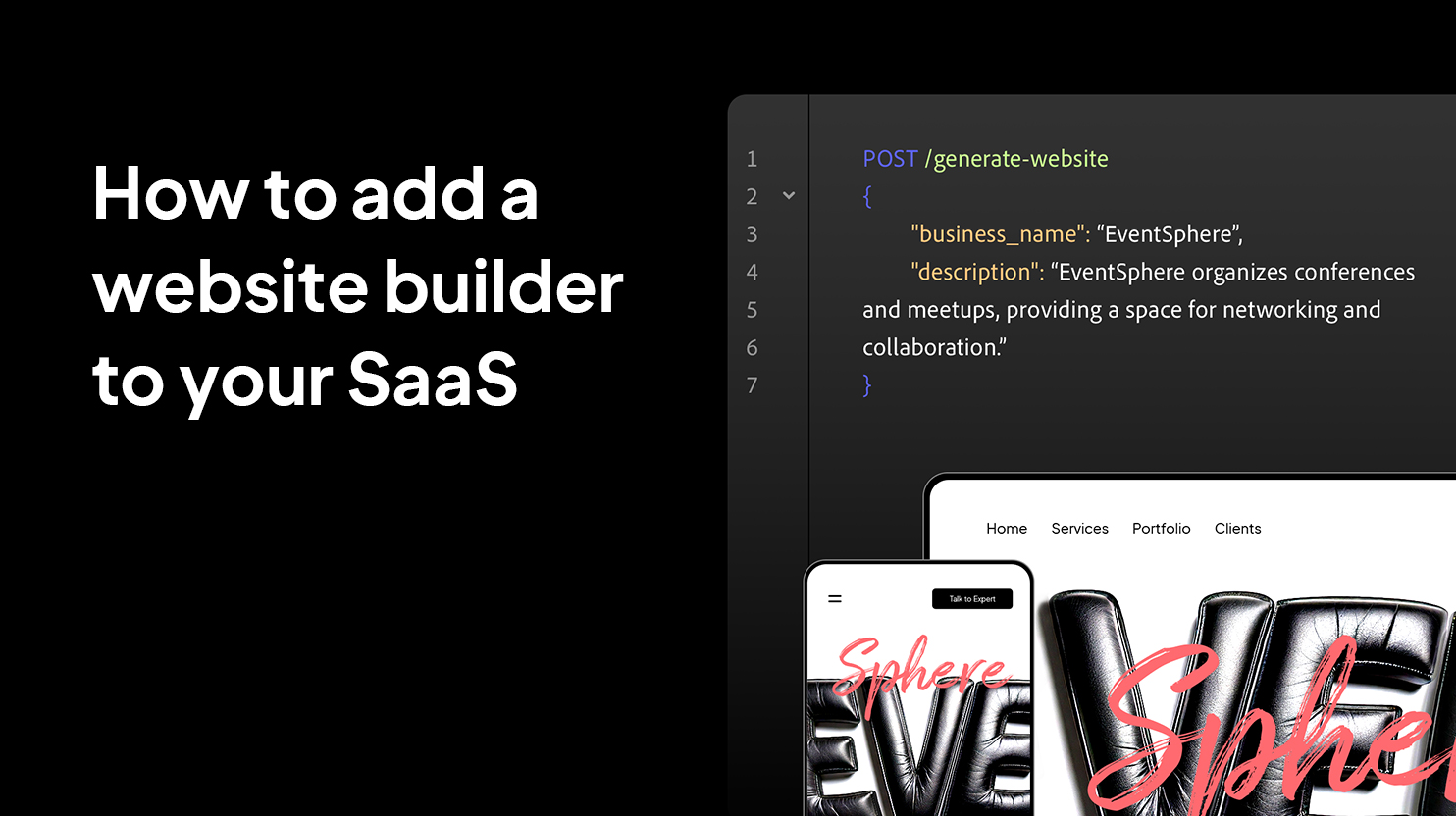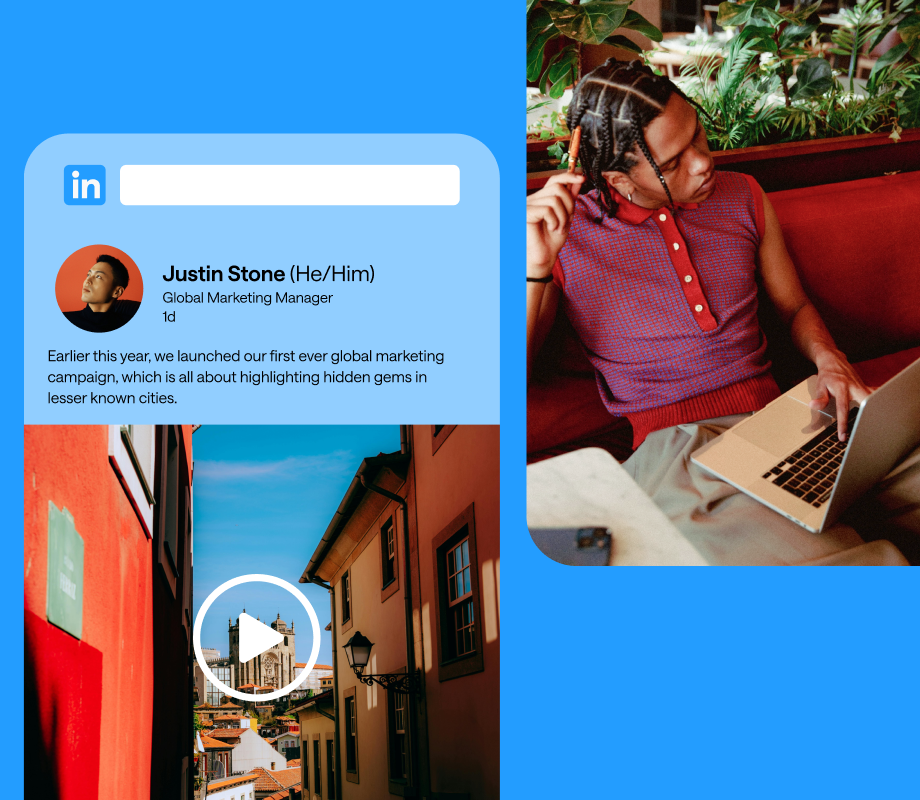You run a SaaS. Your users need websites. You don’t want to build a website builder from scratch. What should you do?
You’ve probably searched for answers. Maybe you typed in how to add a website builder to your SaaS, only to find landing pages selling generic site builders, or blog posts explaining how to build a website for your SaaS, not how to offer one inside your platform.
That’s not helpful, because you’re not looking to launch a homepage. You’re trying to expand your product: increase stickiness, reduce churn, and maybe even unlock a new revenue stream by enabling users to publish real websites directly from your platform.
We’re here to give you the roadmap you’re looking for, drawn from real product conversations, forum threads where founders share what worked (and what didn’t), and a rapidly evolving landscape of site-building tech. You’ll get to see how to add a website builder to your SaaS quickly and without burying yourself under tech overheads
Why SaaS products are adding website builders
The logic behind website builders’ growth in SaaS platforms is simple: all types of users need more than just your tool. They all need some type of public presence. Creators need portfolios. Restaurants need online menus. Therapists need booking sites. Service businesses need lead generation. None of them want to sign up for five different platforms just to make that happen.
The platform that gives them everything in one place wins. When you offer users the option to publish a working website from inside your SaaS:
- You make your product more useful
- You increase stickiness and reduce churn
- You open the door to upsells (custom domains, hosting, premium templates, SEO tools, etc.)
- You become the home base, not just a back-office utility
We’ve seen this bundle work before. Canva added landing pages alongside graphics. Shopify started with a store backend and became a full website host. Vertical SaaS tools are catching up as well. Modern salon software lets stylists build a booking site. Coaching apps help professionals launch a course and sales pages at the same time.
Since 2020, users expect a digital presence to come built-in, with no-code setup, and ideally enhanced by AI. So the real question isn’t if you should offer a website builder. It’s how quickly you can deliver it, and how seamlessly it fits into your product.
Your options: Build, embed, or integrate
Once you’ve decided your SaaS needs a website builder, you need to answer the real question: How to add a website builder to your SaaS? How do you offer it? There are three main paths product teams take, each with its own tradeoffs in control, speed, and complexity.
1. Build your own website builder
This might be your default thought, and the most painful path among the three. Building your own custom builder means full control over UX, features, and integration, but also full responsibility for everything: UI/UX, template management, auth flows, site deployment, DNS, uptime, performance, AI generation (if any), and ongoing maintenance.
You’re building an entirely new product, with all the architectural and operational weight that comes with it.
| Pros | Cons |
|
• Full customization • Seamless UX across your app • Control over stack, templates, and roadmap |
• Massive dev effort and long time to ship • Requires ongoing maintenance and scaling • UX risks if not fully polished |
2. White label an existing builder
This is the shortcut a lot of teams try first. You use an existing tool and either frame it into your platform or direct users to a branded version. It’s fast to set up and gets you something usable in days. But it’s also a surface-level solution. You’ll face limits around:
- Authentication (SSO, session sync)
- Styling consistency
- Deep integration with your app’s backend
- Controlling features, monetization, or automation
| Pros | Cons |
|
• Fast to launch • Little or no development required • Good for MVP validation or small-scale reselling |
• Might feel disconnected from your product • Limited control over features • Not ideal for scale or automation |
3. Integrate an API-based website builder
This is the smart middle path: deep functionality without the full engineering cost of building from scratch. Platforms like 10Web’s Website Builder API give you:
- AI-powered site generation
- Full WordPress websites
- Domain, DNS, plugin, and hosting control
- Managed backups and infrastructure
- Programmatic control over provisioning
- AI Co-Pilot editing & outline AI
Instead of directing to an external tool or starting from zero, you plug powerful site-building capabilities directly into your SaaS product. You control the UX. You own the workflows. You monetize how you want.
| Pros | Cons |
|
• Deep integration with your existing platform • Fast time to market • Hosted, secure, and scalable • Retain your brand and control • Monetize as a core feature or add-on |
• Requires basic dev integration (API calls, auth, data flow) • Needs some front-end scaffolding for your UX |
For teams that don’t want to build but want full control and deep integration, 10Web’s Website Builder API is the high-leverage choice.
Request your API demo now
See how easy it is to integrate AI website generation into your platform!
What’s right for you?
| Option | Level of Control | Time to Launch | Integration Depth | Best For |
| Build Custom | High | Slow | Full | Large teams, long timelines |
| White-Label | Low to Medium | Fast | Light | Resellers, MVPs, platforms wanting fast launch |
| API Integration | Medium to High | Moderate | Deep | Product-led SaaS teams with existing platforms |
When and why to use an API-based website builder
We’ve already seen that building from scratch is too costly, and that third-party tools won’t give you the control or UX you want. An API-based solution is what you’re looking for, and it’s often the clearest answer to the real question behind how to add a website builder to your SaaS. Let’s break it down with specific use cases that match real SaaS product needs.
1. Let users generate websites directly from your platform
With API you provide a simple native experience with no redirects or external dashboards. When users sign up, your platform can auto-generate a site tailored to their business type, using 10Web’s AI engine and delivered as a full WordPress site. , when they edit, they can use the 10Web AI Co-Pilot or a drag-and-drop editor, all under your branding and on your platform.
To conceptualize the experience, let’s see what a Reddit user shared:
I was playing around with 10Web earlier. It did a pretty good job of creating a SaaS product site for me in about 3 minutes.
They weren’t developers, and they didn’t need to configure anything. That’s the kind of experience your platform can now deliver natively.
2. Offer websites as a paid upsell or bundled add-on
The API provides full control over pricing and feature gating. So, it’s ideal for exploring new monetization opportunities. Some platforms:
- Bundle websites into premium tiers
- Charge per site or per AI generation
- Offer domains, hosting, and plugin support as add-ons
Because it’s API-based, you define how it’s packaged, and you control the value your users see.
3. Simplify onboarding with auto-generated sites
Reduce time-to-value by generating a working website the moment someone signs up. You can:
- Pre-fill templates with their signup data
- Let users tweak the copy and design later
- Get them to a “live” experience in minutes (not days)
This is a retention play: when users feel like they’ve already built something on day one, they’re more likely to stay.
Why 10Web?
The 10Web Website Builder API gives your product:
- AI site generation for SMBs, creators, pros
- Full WordPress backend with plugin & template flexibility
- Hosting, backups, domain, DNS, and caching, all managed
- Multi-attempt generation for better user outcomes
- Enterprise-grade uptime and security
- GDPR and SOC 2 compliance
Unlike traditional white-label tools, it plugs directly into your own product stack, so you own the UX, billing, and experience. With this tool, you are embedding value, retention, and revenue into the product you’ve already built.
How to add a website builder to your SaaS (with 10Web)
By now, you know that an API-based builder makes sense when you want speed, control, and scalability without reinventing the wheel. So, how do you actually get started with 10Web and make sure your user flow is not under threat? Let’s see what that looks like in practice together.
1. Decide how website creation fits into your product
Before touching code, map out the experience you want your users to have:
- Will websites be auto-generated at sign-up?
- Will users click “Create Website” inside your dashboard?
- Are you bundling websites into a premium plan?
Knowing this helps you integrate the API more smoothly and tailor it to your UX.
2. Request access and get your API keys
Begin by visiting 10Web’s Website Builder API page and booking a strategy call. During the call you’ll get guidance, answers to your questions, as well as access to a demo. You’ll get API credentials, onboarding support, and access to detailed documentation that covers:
- AI-powered website creation
- Domain management
- Plugin control
- Hosting and backup setup
Additionally, you’ll gain access to a dedicated Slack channel for direct support from 10Web’s engineering team, all this comes with a 30-day money back guarantee.

Request your API demo now
See how easy it is to integrate AI website generation into your platform!
3. Start with a test site generation
Use your test environment to try a full flow. Send user data to the API, watch the AI generate a site, and view the result inside your platform (WordPress dashboard or front-end view). This is the fastest way to understand the power and see how your product can deliver real websites in seconds.
4. Design the user experience around the builder
Now that you can generate and host real sites, the next step is shaping how users experience that power inside your platform. This is where integration can either feel magical, or messy. The goal is to create an experience your users will love. Here are some tips to help you:
| Tip | What it means | Why it works |
|
Think in workflows, not features |
Don’t bolt on “Create Website” as a siloed option. Build it into onboarding, editing, and upgrade flows. |
The builder becomes part of your core product, not a disconnected add-on. |
|
Don’t over-engineer your v1 |
Start with the basics: default templates, AI generation, and just enough customization. |
Launch fast and learn quickly, then improve based on real user behavior. |
|
Build feedback into the experience |
Use lightweight prompts or analytics to track satisfaction and usage. |
Helps you uncover friction points and double down on what works. |
Once you get this flow working, you’re in a great position to scale. 10Web handles hosting, backups, plugin management, caching, and infrastructure at scale, so your team can focus on pricing, positioning, and user growth instead of feature bloat or maintenance.
Ready to offer website creation inside your SaaS?
If your users need websites, it’s worth offering one. Building from scratch takes time. Embedding tools can feel disconnected. An API-based builder gives you the control, speed, and scale your product needs, without the overhead.
So, there’s a simple answer to the question of how to add a website builder to your SaaS. Use 10Web’s Website Builder API to launch fast, keep everything under your brand, and deliver real value from day one. If you want to offer websites to your users this quarter, this is the place to start.

Request your API demo now
See how easy it is to integrate AI website generation into your platform!
FAQ
What’s the fastest way to add a website builder to a SaaS platform?
Can I integrate a WordPress builder into my SaaS?
Yes. 10Web’s API lets you generate and manage full WordPress websites under your brand, with hosting, plugins, domains, and user access all handled through your backend.
Is it better to build or buy a website builder?
Building gives you control but requires major resources. Buying (or integrating via API) saves time, reduces risk, and lets you focus on product growth. Most teams go with integration unless they have a dedicated builder roadmap.
What’s the best API-based website builder for SaaS tools?
Can I white-label a website builder?
Yes. 10Web offers both an API-based solution for integration into your own product, and a fully white-labeled dashboard you can resell under your brand.
What is a SaaS builder?
A SaaS builder typically refers to a tool that helps you create a Software-as-a-Service product. It can also mean a website builder tailored for SaaS businesses, like 10Web, which helps SaaS platforms offer websites to their users.
Which website builder is best for service business?
10Web is a great fit for service businesses. Its AI generates industry-specific WordPress websites, which can be customized and launched in minutes, perfect for coaches, consultants, salons, and local pros.
How much does it cost to build a SaaS website?
It varies. A basic SaaS website using a builder can cost under $100, while a custom-coded site could run into thousands depending on design, backend features, and dev time.
Can SaaS be a website?
Yes. A SaaS can be delivered entirely through a website. Most SaaS products are web apps accessed through browsers, supported by backends, databases, and third-party integrations.











